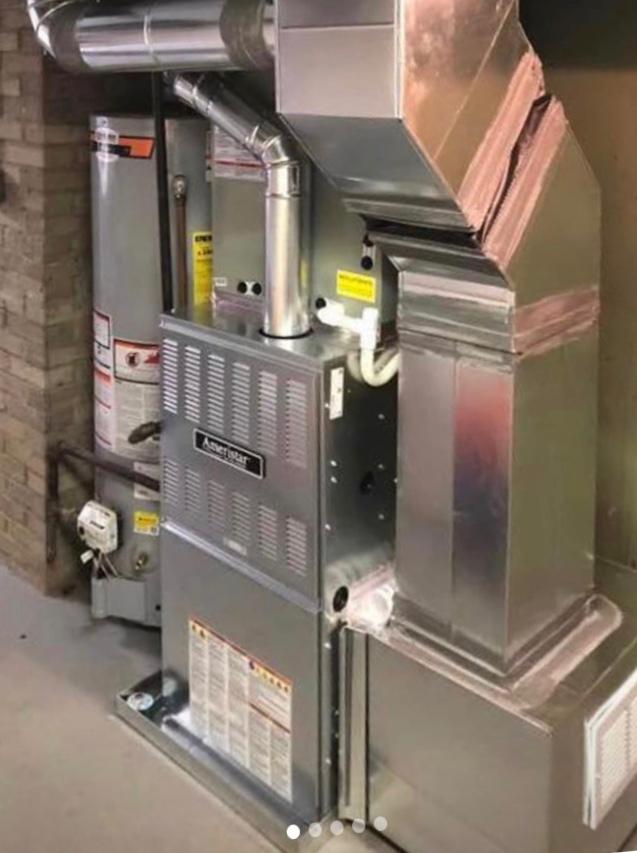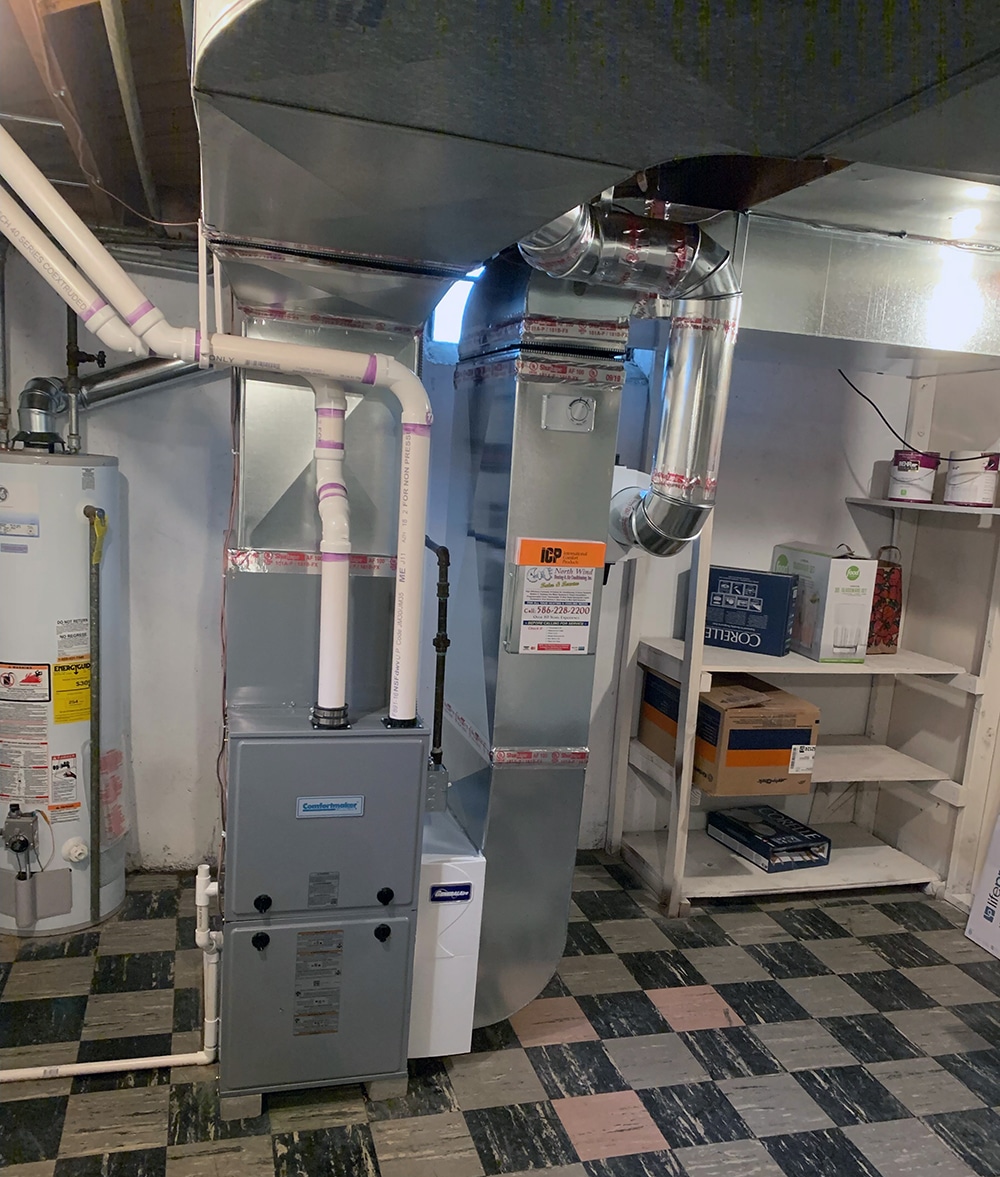HVAC Portland professionals: Expert furnace installation and comprehensive heating solutions
HVAC Portland professionals: Expert furnace installation and comprehensive heating solutions
Blog Article
The Ultimate Overview to Furnace Installment for a Cozy Home
Heating system installation is a critical aspect of preserving a comfy home setting, particularly during the cooler months. Comprehending the different kinds of heaters offered and the importance of selecting the proper size can greatly influence both effectiveness and convenience levels. Additionally, an extensive installation process, matched by the right tools and products, ensures ideal performance. This guide intends to equip home owners with the expertise needed to make educated choices and implement reliable maintenance methods. As you consider these variables, the question remains: what actions can you take to ensure your heating system offers you well for several years ahead?
Sorts Of Furnaces
When thinking about heater installation, recognizing the numerous sorts of furnaces available is essential for making a notified decision. The main sorts of furnaces consist of gas, electrical, and oil heating systems, each offering distinctive benefits and considerations.
Gas furnaces are one of the most common choice due to their efficiency and lower operational costs. They utilize gas or propane, providing quick home heating and regular performance, making them ideal for chillier climates.
Electric furnaces, while generally much easier to mount and keep, often tend to have higher functional expenses. They are commonly favored in areas where gas service is not available or for homes with existing electric infrastructure.
Oil furnaces, though much less usual today, stay a practical choice in particular areas. They shed heating oil, which can be beneficial during colder months, yet their reliance on oil delivery presents possible challenges.
Additionally, there are high-efficiency versions readily available across these kinds, which can significantly decrease energy intake and energy expenses. Eventually, comprehending these heater types will aid homeowners choose a system that straightens with their heating needs, budget plan, and power preferences.
Picking the Right Size
Picking the proper size for a heater is critical to making sure optimal performance and power performance. A small heating system will certainly battle to keep comfy temperatures during the chilly months, causing increased damage, greater energy costs, and potential system failure. On the other hand, a large heating system might cycle on and off too often, leading to inefficient home heating and unequal temperature distribution within the home.

Heater dimensions are normally gauged in British Thermal Devices (BTUs), which indicate the quantity of power needed to warm an area. It is a good idea to seek advice from a certified heating and cooling expert who can perform the essential estimations and suggest a suitably sized unit. furnace repair. Buying the ideal heating system dimension not just enhances convenience however additionally adds to long-term power financial savings and system dependability
Installation Process Review
Once the suitable heater size has actually been figured out, the next step entails comprehending the setup procedure. This process commonly begins with an extensive evaluation of the installation site, consisting of the existing ductwork and ventilation systems. Proper planning is necessary to make certain seamless integration and optimum performance of the brand-new furnace.
The setup typically consists of disconnecting the old unit, which entails safely eliminating any type of electrical connections, gas lines, and ductwork attached to the previous heating system - furnace repair. As soon as gotten rid of, the new heater is thoroughly located and leveled, ensuring that it meets the maker's specs for ideal operation
Next, the installer will connect the needed gas and electrical lines, sticking to regional codes and security policies. Following this, ductwork might require to be changed or replaced to suit the new system, ensuring efficient air flow throughout the home.

Vital Tools and Materials
Gathering the important tools and materials is essential for a successful heating system installment. Correct preparation makes sure that the installation process is reliable and lessens the potential for Source errors.
Key devices required include a drill, screwdrivers, wrenches, pliers, and a degree. A multimeter is important for electric connections, while a pipeline cutter and flexible wrench are necessary for gas line setup. Furthermore, a measuring tape and a stud finder will certainly assist in ensuring precise placement and safe and secure fastening of the furnace.
In regards to materials, you will need ductwork, insulation, and securing tape to make certain ideal air our website movement and energy efficiency. It is additionally vital to have a new heater filter handy, along with airing vent products, such as PVC pipeline or metal flue, depending upon the kind of furnace being mounted.
Security tools, including handwear covers, goggles, and a face mask, is also important to safeguard against dirt and debris during installation. Having all these tools and products easily available not just simplifies the process however also enhances the safety and security and performance of the heating system installation.
Upkeep Tips for Long Life
To make sure the longevity of your heating system, it is important to carry out a regular maintenance routine that addresses crucial elements of the system. Beginning by replacing or cleaning up the air filter each to 3 months, as a stopped up filter can restrict airflow and reduce performance. In addition, examine and cleanse the blower setting up to avoid dust buildup that can impede efficiency.
Next, check the thermostat setups and rectify if essential to make certain accurate temperature policy. Examine the ductwork for leaks or clogs, as this can cause power loss and irregular heating. Consistently oil the motor and bearings according to the maker's suggestions to lessen deterioration.
Expert inspections ought to happen yearly, where a certified professional can analyze the heater's overall condition, check for gas leakages, and make sure that security features are working properly. Ultimately, think about setting up a programmable thermostat to maximize energy use and maintain constant home temperatures. By adopting these maintenance practices, you can improve your furnace's efficiency, over at this website expand its lifespan, and inevitably appreciate a comfortable and comfy home atmosphere.
Final Thought
Effective furnace installment is vital for accomplishing optimal home convenience and energy effectiveness. Comprehending various heating system kinds and selecting the ideal size makes certain appropriate performance.
Report this page